�
Fundamentals of
Global Positioning
System Receivers
�
Fundamentals of
Global Positioning
System Receivers
A Software Approach
SECOND EDITION
JAMES BAO-YEN TSUI
A JOHN WILEY & SONS, INC., PUBLICATION
�
Copyright 2005 by John Wiley & Sons, Inc., Hoboken, New Jersey. All rights reserved.
Published simultaneously in Canada.
No part of this publication may be reproduced, stored in a retrieval system, or transmitted in any
form or by any means, electronic, mechanical, photocopying, recording, scanning, or otherwise,
except as permitted under Section 107 or 108 of the 1976 United States Copyright Act, without
either the prior written permission of the Publisher, or authorization through payment of the
appropriate per-copy fee to the Copyright Clearance Center, Inc., 222 Rosewood Drive, Danvers,
MA 01923, 978-750-8400, fax 978-750-4470, or on the web at www.copyright.com. Requests to
the Publisher for permission should be addressed to the Permissions Department, John Wiley &
Sons, Inc., 111 River Street, Hoboken, NJ 07030, (201) 748-6011, fax (201) 748-6008, e-mail:
permreq@wiley.com.
Limit of Liability/Disclaimer of Warranty: While the publisher and author have used their best
efforts in preparing this book, they make no representations or warranties with respect to the
accuracy or completeness of the contents of this book and specifically disclaim any implied
warranties of merchantability or fitness for a particular purpose. No warranty may be created or
extended by sales representatives or written sales materials. The advice and strategies contained
herein may not be suitable for your situation. You should consult with a professional where
appropriate. Neither the publisher nor author shall be liable for any loss of profit or any other
commercial damages, including but not limited to special, incidental, consequential, or other
damages.
For general information on our other products and services please contact our Customer Care
Department within the U.S. at 877-762-2974, outside the U.S. at 317-572-3993 or
fax 317-572-4002.
Wiley also publishes its books in a variety of electronic formats. Some content that appears in
print, however, may not be available in electronic format.
Library of Congress Cataloging-in-Publication Data
Tsui, James Bao-yen.
Fundamentals of global positioning system receivers : a software approach / James
Bao-yen Tsui. – 2nd ed.
p. cm.
Includes bibliographical references (p. ).
ISBN 0-471-70647-7 (cloth)
1. Global Positioning System. I. Title.
G109.5.T85 2005
.285 – dc22
910
Printed in the United States of America.
10 9 8 7 6 5 4 3 2 1
2004053458
�
Contents
Preface
Preface to the First Edition
Chapter 1 Introduction
1.1
1.2
1.3
1.4
1.5
1.6
1.7
Introduction
History of GPS Development
A Basic GPS Receiver
Approaches of Presentation
Software Approach
Potential Advantages of the Software Approach
Organization of the Book
References
Chapter 2 Basic GPS Concept
2.1
2.2
2.3
2.4
2.5
2.6
2.7
2.8
2.9
2.10
2.11
Introduction
GPS Performance Requirements
Basic GPS Concept
Basic Equations for Finding User Position
Measurement of Pseudorange
Solution of User Position from Pseudoranges
Position Solution with more than Four Satellites
User Position in Spherical Coordinate System
Earth Geometry
Basic Relationships in an Ellipse
Calculation of Altitude
xiii
xv
1
1
1
2
3
3
4
5
5
7
7
7
8
10
11
12
13
15
16
17
19
v
�
vi
CONTENTS
2.12
2.13
2.14
2.15
2.16
Calculation of Geodetic Latitude
Calculation of a Point on the Surface of the
Earth
Satellite Selection
Dilution of Precision
Summary
References
Chapter 3 Satellite Constellation
3.1
3.2
3.3
3.4
3.5
3.6
3.7
3.8
3.9
3.10
3.11
3.12
3.13
3.14
Introduction
Control Segment of the GPS System
Satellite Constellation
Maximum Differential Power Level from
Different Satellites
Sidereal Day
Doppler Frequency Shift
Average Rate of Change of the Doppler
Frequency
Maximum Rate of Change of the Doppler
Frequency
Rate of Change of the Doppler Frequency Due
to User Acceleration
Kepler’s Laws
Kepler’s Equation
True and Mean Anomaly
Signal Strength at User Location
Summary
References
Chapter 4 Earth-Centered, Earth-Fixed Coordinate System
4.1
4.2
4.3
4.4
4.5
4.6
4.7
4.8
4.9
4.10
Introduction
Direction Cosine Matrix
Satellite Orbit Frame to Equator Frame
Transform
Vernal Equinox
Earth Rotation
Overall Transform from Orbit Frame to
Earth-Centered, Earth-Fixed Frame
Perturbations
Correction of GPS System Time at Time of
Transmission
Calculation of Satellite Position
Coordinate Adjustment for Satellites
20
22
23
24
27
27
30
30
31
31
33
33
34
38
39
40
40
42
44
46
48
49
51
51
52
54
56
58
59
60
62
63
65
�
CONTENTS
4.11
4.12
Ephemeris Data
Summary
References
Chapter 5 GPS C/A Code Signal Structure
5.1
5.2
5.3
5.4
5.5
5.6
5.7
5.8
5.9
5.10
5.11
5.12
5.13
5.14
5.15
5.16
5.17
5.18
Introduction
Transmitting Frequency
Code Division-Multiple Access (CDMA) Signals
P Code
C/A Code and Data Format
Generation of C/A Code
Correlation Properties of C/A Code
Navigation Data Bits
Telemetry (TLM) and Hand Over Word (HOW)
GPS Time and the Satellite Z Count
Parity Check Algorithm
Navigation Data from Subframe 1
Navigation Data from Subframes 2 and 3
Navigation Data from Subframes 4 and
5–Support Data
Ionospheric Model
Tropospheric Model
Selectivity Availability (SA) and Typical
Position Errors
Summary
References
Chapter 6 Receiver Hardware Considerations
6.1
6.2
6.3
6.4
6.5
6.6
6.7
6.8
6.9
6.10
Introduction
Antenna
Amplification Consideration
Two Possible Arrangements of Digitization by
Frequency Plans
First Component After the Antenna
Selecting Sampling Frequency as a Function of
the C/A Code Chip Rate
Sampling Frequency and Band Aliasing for Real
Data Collection
Down-Converted RF Front End for Real Data
Collection
Direct Digitization for Real Data Collection
In-Phase (I) and Quadrant-Phase (Q) Down
Conversion
vii
66
67
67
68
68
69
71
71
72
73
78
79
80
81
82
88
90
92
97
99
100
100
101
105
105
106
107
110
111
111
113
115
116
118
�

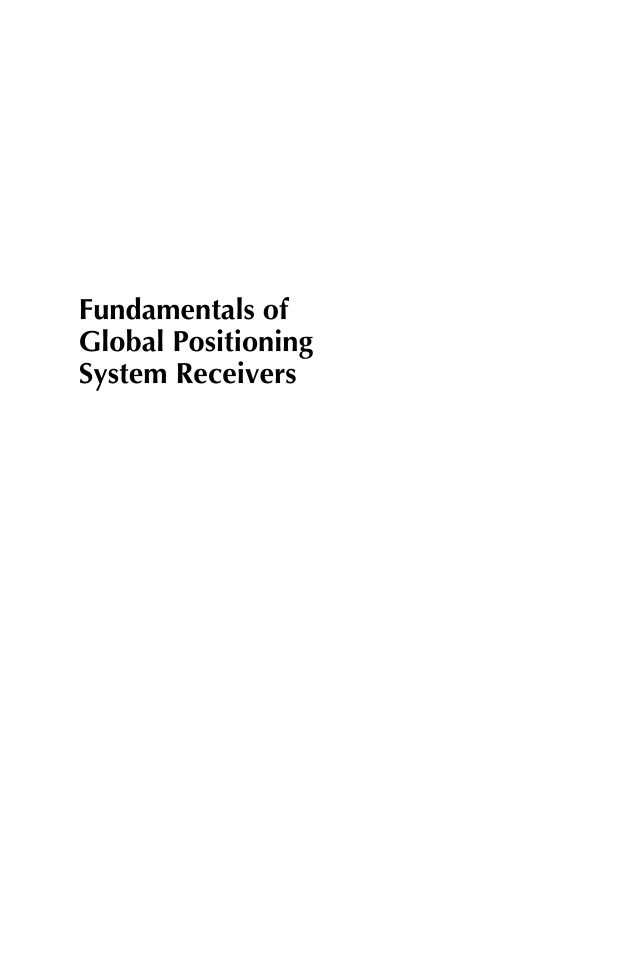


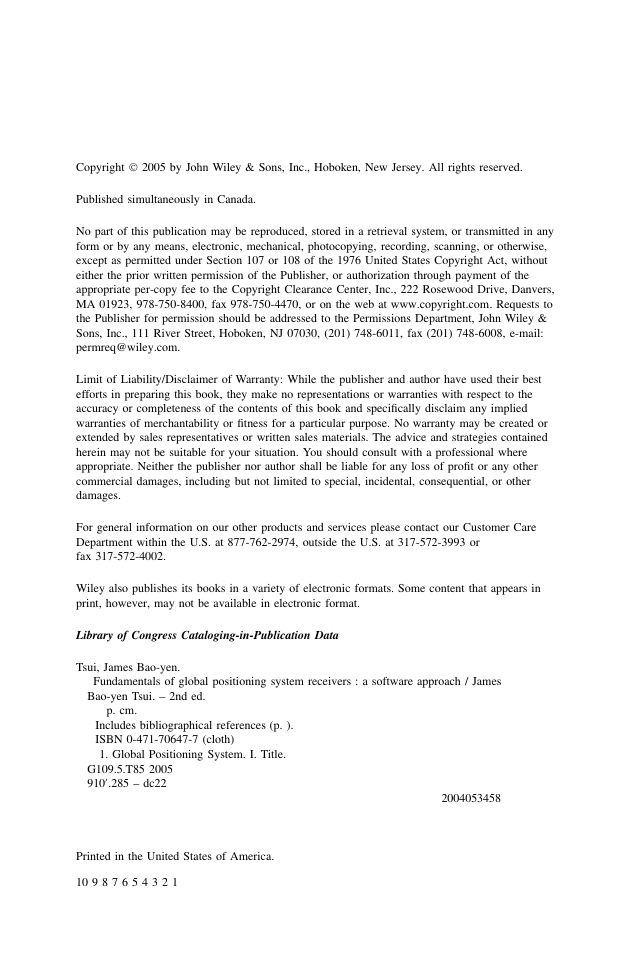
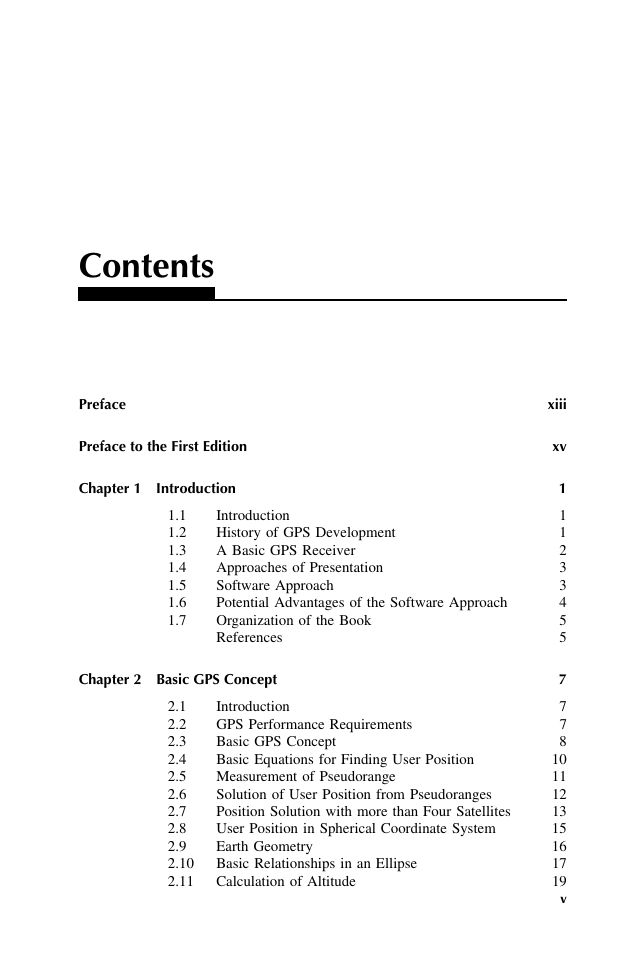
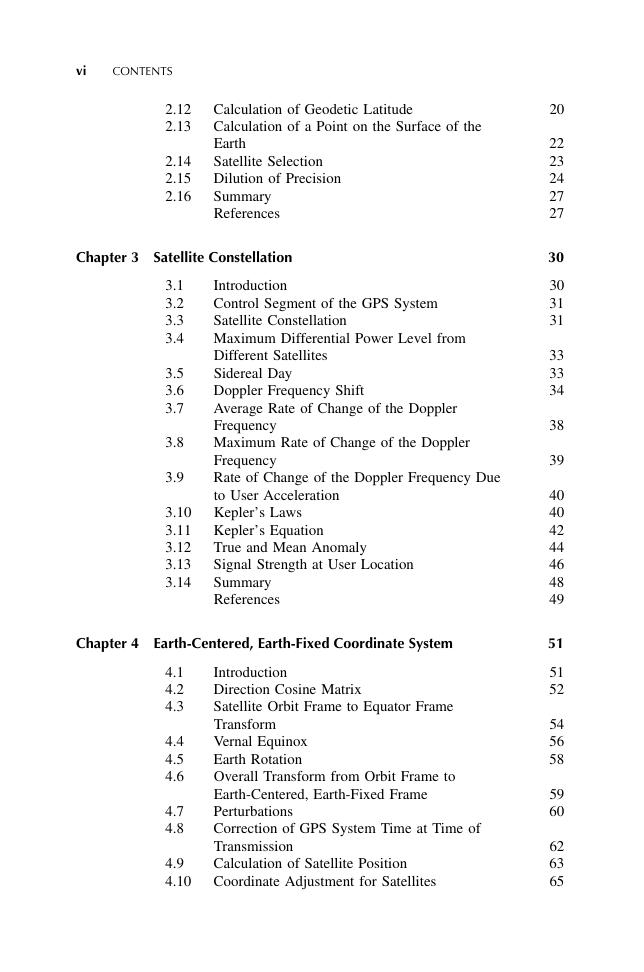
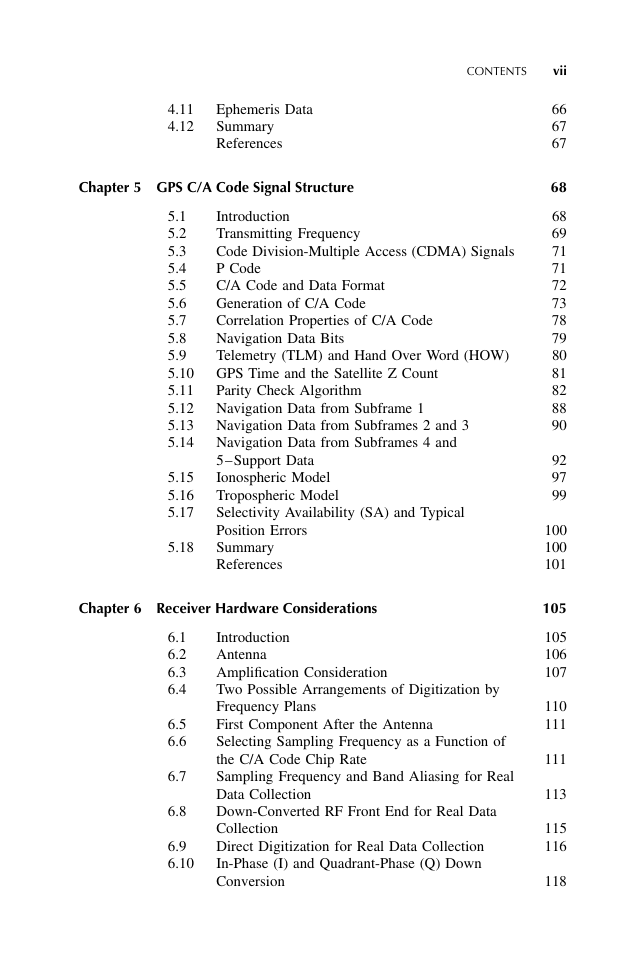








 2023年江西萍乡中考道德与法治真题及答案.doc
2023年江西萍乡中考道德与法治真题及答案.doc 2012年重庆南川中考生物真题及答案.doc
2012年重庆南川中考生物真题及答案.doc 2013年江西师范大学地理学综合及文艺理论基础考研真题.doc
2013年江西师范大学地理学综合及文艺理论基础考研真题.doc 2020年四川甘孜小升初语文真题及答案I卷.doc
2020年四川甘孜小升初语文真题及答案I卷.doc 2020年注册岩土工程师专业基础考试真题及答案.doc
2020年注册岩土工程师专业基础考试真题及答案.doc 2023-2024学年福建省厦门市九年级上学期数学月考试题及答案.doc
2023-2024学年福建省厦门市九年级上学期数学月考试题及答案.doc 2021-2022学年辽宁省沈阳市大东区九年级上学期语文期末试题及答案.doc
2021-2022学年辽宁省沈阳市大东区九年级上学期语文期末试题及答案.doc 2022-2023学年北京东城区初三第一学期物理期末试卷及答案.doc
2022-2023学年北京东城区初三第一学期物理期末试卷及答案.doc 2018上半年江西教师资格初中地理学科知识与教学能力真题及答案.doc
2018上半年江西教师资格初中地理学科知识与教学能力真题及答案.doc 2012年河北国家公务员申论考试真题及答案-省级.doc
2012年河北国家公务员申论考试真题及答案-省级.doc 2020-2021学年江苏省扬州市江都区邵樊片九年级上学期数学第一次质量检测试题及答案.doc
2020-2021学年江苏省扬州市江都区邵樊片九年级上学期数学第一次质量检测试题及答案.doc 2022下半年黑龙江教师资格证中学综合素质真题及答案.doc
2022下半年黑龙江教师资格证中学综合素质真题及答案.doc